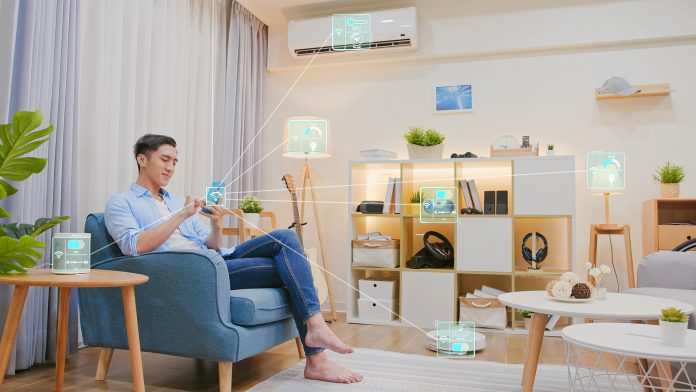Matthew Cockerill, an independent strategic design consultant, outlines how disruptive technology is fuelling a smart home revolution.
When new technologies emerge, it’s easy to get caught up in the hype and groupthink surrounding the smart home revolution. From the metaverse and web3, to generative AI and spatial computing, there’s always a flurry of opinions and analyses.
However, as business innovators, we need to establish views beyond the hype and perceive the wider implications and opportunities that may not necessarily always grab headlines. To see beyond the hot takes and agendas from brands, journalists, and the inevitable LinkedIn influencers.
In recent years, a quiet revolution has been unfolding within our homes. Taking place at the ‘front end’ and the ‘back end’ of the smart home.
Our living spaces are gradually transitioning into sophisticated, interconnected environments. Beyond standalone smart devices, our homes are evolving into hubs of smart living, leveraging voice control, Machine Learning, and Artificial Intelligence in novel ways.
This revolution not only spans our homes’ interiors but extends to its connectivity across other households.
The room as a computer: Embracing spatial computing in the smart home revolution
One dimension of the smart home revolution is spatial computing, which goes beyond the flat interfaces of smartphones and laptops to create a three-dimensional computing universe.
This is not merely about transferring our desktop interfaces into a room, as envisioned by Apple and its recently announced Vision Pro. It entails every square meter of our living space potentially becoming aware of our needs.
A spatially aware environment that can understand and anticipate our daily needs and enable the creation of proactive services.
While the future may hold virtual and augmented reality as interfaces for interacting with this spatially aware environment, we are already witnessing the arrival of goggle-free spatial computing.
From Apple’s centre stage, Lululemon’s Smart mirror, to the recently launched Sky Live service, or a smart camera powered by Machine Learning and paired with your TV. They power the smart home revolution and enable social Zoom calls, hands-free immersive gaming, social watch parties, and virtual personal training to our living rooms that understand our actions.
The focus here is not on desktop computing but on creating more rewarding and social spaces experiences within our homes.
IoT to reduce carbon emissions across homes
While computing continues to seamlessly integrate into our physical spaces at the ‘front end’, the second element of this quiet revolution involves the ‘back end’ of our homes – and how it interfaces with the wider world.

Traditionally, with IoT appliances, we manually set the controls even if this is done on a fancy app. However, we will increasingly be giving up control to intelligent platforms for increased convenience, efficiency and to minimise our carbon footprints.
For example, right now, we often optimise usage of washing machines and dishwashers for our convenience and to benefit from cheaper off-peak electricity by time shifting the start time.
However, as the energy grid becomes increasingly distributed, decarbonised, and intelligent, we will increasingly relinquishing direct control over many of our energy-intensive appliances. By doing so, we save money individually and contribute collectively across our individual homes to fuel the smart home revolution.
Moreover, we can balance the grid loads of our growing renewable energy system, to reduce our dependence on non-renewable energy sources thus reducing our footprint.
An example of this shift is the recent smart charging tariffs for electric vehicles (EVs) by energy suppliers like Octopus and OVO Energy that offer cheaper tariffs for giving up some control.
Users can set charging preferences, while an AI-powered platform optimises charging strategy, efficiently staggering charge times during off-peak hours or high renewable energy production periods. This orchestrated approach enhances the entire energy network’s efficiency whilst still allowing customers to have the car ready when needed.
While the latest technological innovations that power the smart home revolution may dazzle, it’s the incremental changes of our seemingly mundane products within our homes that are set to truly revolutionise our lives.
Not only to enrich our daily lives with exciting and interactive experiences, but also to help foster smarter and greener ways of living.









